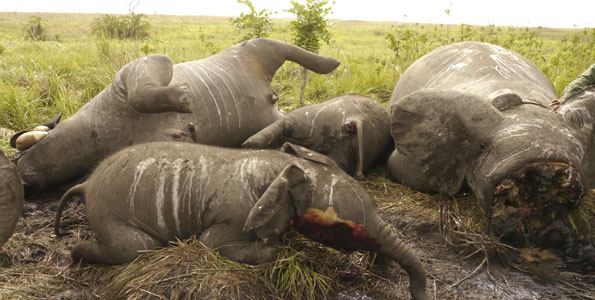
A fresh report on the status of Tanzania’s wildlife sector cited corruption as one of the reasons behind the increasing incidents of wildlife poaching in the East African nation.
The 82-page report, which was released here on Monday, came after a study carried out by the Arusha NGO Network (ANGONET) in collaboration with Kepa, a Finnish NGO Platform.
Some wildlife officials have been implicated with corruption practices in the report titled “State of corporate social responsibility in the wildlife sector”.
Joanita Mlay, one of the researchers who took part in the study, said majority of the respondents associated light fines or sentences that were imposed to poachers on one hand and heavy fines to ordinary community members who were involved in minor offenses on the other hand.
“In some cases courts granted bail to the accused individuals as provided by relevant laws. This provision gave opportunity for bailed individuals enough time to interfere with cases through corruption and ultimately resulting into chances of such cases being ruled out in favor of culprits,” the researcher said.
“In circumstances where on one hand prosecutors felt that there existed corruption between magistrates and suspects, they were discouraged to follow up the cases,” said Peter Aham, executive chairman of ANGONET.
“On the other hand when bribery was felt to prevail between game officers and the accused, informers avoided intimidation and shunned away from attending courts,” he said.
Aham revealed that some respondents attributed prevailing interception of trophies in foreign countries but believed to originate from Tanzania to corruption.
“They wondered why there has been many reports on interceptions on consignments of elephant ivory either on the way to foreign countries or already packed and ready for export at exist points than reports on poachers’ intercepted before they have killed the animals,” he said.
“All what were happening were attributed to corruption unless the actors could prove otherwise,” the official said.
Other shortfalls shown in the report include lack of accountability to both wildlife management leaders and local authority leaders.
The report proposed the need for the wildlife management and community-based forest management at the village level to be integrated so that the villages can gain benefits of the resources from their land.
The report also called on stakeholders to come up with strategies for effective community engagement in the process of establishment of the investments.
Benefit sharing should be developed to ensure that profits are equitably distributed to offset the conservation-induced cost and should trickle down to households which directly suffer from the wildlife impacts.
FRENCH VERSION


